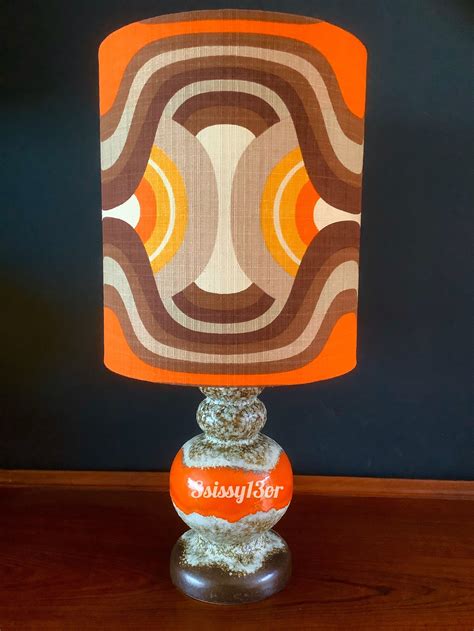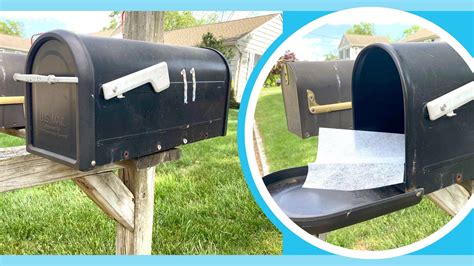
Finding a dryer sheet in your mailbox isn’t junk mail; it’s a strategic move by postal workers to ward off wasps, yellow jackets, and other stinging insects notorious for nesting in mailboxes. The seemingly unusual pest control method leverages the dryer sheet’s fragrance to deter these insects, offering a safer alternative to pesticides for both carriers and residents.
Dryer Sheets: An Unconventional Weapon Against Mailbox Pests
Postal workers across the United States are employing an unconventional yet effective method to combat stinging insects that frequently build nests in mailboxes: dryer sheets. This practice, while not officially sanctioned by the United States Postal Service (USPS), has gained traction among carriers seeking a safer and more accessible alternative to traditional pest control measures. The theory behind this method is that the strong fragrance of dryer sheets deters wasps, yellow jackets, and other stinging insects, preventing them from establishing nests within the confines of mailboxes.
According to several postal workers, the practice has proven effective in reducing the number of stings and unpleasant encounters with aggressive insects. “Wasps hate the strong smell of dryer sheets,” one postal worker told Yahoo Lifestyle. “I’ve been using them for years, and it really makes a difference, especially during the summer months when they are most active.”
The appeal of dryer sheets lies in their simplicity and availability. Unlike pesticides, which require careful handling and application, dryer sheets are easy to use and pose minimal risk to both postal workers and homeowners. Furthermore, they offer a more environmentally friendly option compared to chemical sprays, aligning with growing concerns about the impact of pesticides on pollinators and the broader ecosystem.
Why Mailboxes Are Prime Nesting Locations
Mailboxes provide an ideal environment for stinging insects to build their nests. They offer shelter from the elements, protection from predators, and a confined space that is easily defended. The dark, enclosed nature of a mailbox mimics the natural nesting sites of many wasp and yellow jacket species. These insects are particularly drawn to mailboxes during the spring and summer months when they are actively building their colonies.
Wasps and yellow jackets are social insects, meaning they live in colonies with a clear division of labor. The queen wasp or yellow jacket starts the colony by building a small nest and laying eggs. As the colony grows, worker wasps take over the tasks of nest building, foraging for food, and defending the colony. When threatened, these insects can become aggressive and deliver painful stings.
The presence of a wasp or yellow jacket nest in a mailbox poses a significant risk to postal workers, homeowners, and anyone else who needs to access the mailbox. Stings can be painful and, in some cases, life-threatening, especially for individuals with allergies. Encounters with aggressive insects can also lead to accidents, such as dropping mail or falling while trying to avoid a sting.
The Science Behind the Dryer Sheet Deterrent
While the effectiveness of dryer sheets as an insect repellent is largely anecdotal, there are plausible explanations for why they may work. The strong fragrance of dryer sheets is believed to disrupt the insects’ olfactory senses, making it difficult for them to locate suitable nesting sites. Many insects rely on scent to navigate and find food, so a powerful odor can be disorienting and deter them from entering an area.
Dryer sheets contain a variety of chemicals, including fragrances, softening agents, and antistatic compounds. Some of these chemicals may have repellent properties that affect insects. For example, certain fragrances may mimic the scent of natural insect repellents, while other compounds may be irritating or toxic to insects.
However, it is important to note that the effectiveness of dryer sheets as an insect repellent may vary depending on the type of insect, the concentration of the fragrance, and the environmental conditions. Some insects may be more resistant to the effects of dryer sheets than others, and the fragrance may dissipate quickly in windy or hot weather.
Expert Opinions on Alternative Pest Control Methods
Entomologists and pest control experts offer mixed opinions on the use of dryer sheets as an insect repellent. Some experts acknowledge that the strong fragrance of dryer sheets may have a deterrent effect on certain insects, while others remain skeptical about their overall effectiveness.
Dr. Judy Black, an entomologist and VP of Technical Services at Steritech, stated that while she had not encountered research that supported dryer sheets repelling wasps, she “can’t say it doesn’t work,” and added, “it wouldn’t hurt to try.”
Other experts suggest that there are more effective and reliable methods for controlling insects, such as using insecticidal sprays or traps. However, these methods may not be suitable for everyone, particularly those who are concerned about the use of chemicals or have allergies.
Ultimately, the decision of whether or not to use dryer sheets as an insect repellent is a personal one. Homeowners should weigh the potential benefits and risks of this method and consider alternative options before making a decision.
Official Stance of the United States Postal Service (USPS)
The USPS does not have an official policy on the use of dryer sheets as an insect repellent. While the agency recognizes the challenges that postal workers face in dealing with stinging insects, it does not endorse or recommend any specific pest control methods.
“The safety of our employees is of utmost importance,” a USPS spokesperson said. “We encourage our employees to report any safety concerns to their supervisors, and we provide them with training on how to avoid insect stings.”
The USPS relies on professional pest control services to address insect infestations in postal facilities and on postal routes. However, individual postal workers are often left to their own devices when it comes to dealing with insects in mailboxes. This has led to the widespread adoption of dryer sheets as a DIY pest control method.
Homeowner Responsibilities and Best Practices
While postal workers may take the initiative to place dryer sheets in mailboxes, homeowners also have a responsibility to maintain their mailboxes and prevent insect infestations. Here are some best practices for keeping mailboxes pest-free:
- Regularly inspect your mailbox: Check for signs of insect nests, such as mud dauber nests or wasp nests.
- Remove any nests promptly: If you find a nest, remove it carefully, wearing protective clothing and gloves.
- Seal any cracks or openings: Seal any cracks or openings in your mailbox to prevent insects from entering.
- Keep the area around your mailbox clean: Remove any debris or vegetation that could attract insects.
- Consider using a commercial insect repellent: Apply a commercial insect repellent to the inside of your mailbox, following the instructions on the label.
- Be cautious when opening your mailbox: Approach your mailbox with caution, especially during the spring and summer months when insects are most active.
By following these best practices, homeowners can help reduce the risk of insect infestations and create a safer environment for themselves and their postal workers.
Potential Risks and Considerations
While dryer sheets may offer a simple and convenient solution for deterring insects, there are some potential risks and considerations to keep in mind:
- Allergic reactions: Some individuals may be allergic to the chemicals in dryer sheets, which could cause skin irritation, respiratory problems, or other allergic reactions.
- Environmental impact: Dryer sheets contain chemicals that can leach into the soil and water, potentially harming the environment.
- Limited effectiveness: Dryer sheets may not be effective against all types of insects, and their effectiveness may diminish over time.
- False sense of security: Relying solely on dryer sheets may create a false sense of security, leading individuals to neglect other important pest control measures.
- Potential damage to mail: In rare cases, the chemicals in dryer sheets could damage or discolor mail.
Before using dryer sheets as an insect repellent, it is important to weigh these potential risks and considerations and make an informed decision.
Alternatives to Dryer Sheets for Pest Control
If you are concerned about the potential risks of using dryer sheets, there are several alternative pest control methods that you can consider:
- Commercial insect repellents: Commercial insect repellents are available in a variety of formulations, including sprays, lotions, and wipes. These products contain chemicals that repel insects, such as DEET or picaridin.
- Natural insect repellents: Natural insect repellents are made from plant-based ingredients, such as citronella, eucalyptus, or peppermint oil. These products are generally considered to be safer than commercial insect repellents, but they may not be as effective.
- Insect traps: Insect traps are designed to attract and capture insects. These traps can be used to reduce the population of insects in a specific area.
- Professional pest control services: If you have a severe insect infestation, you may want to consider hiring a professional pest control service. These services can provide a comprehensive assessment of your pest problem and develop a customized treatment plan.
- Essential Oils: Some essential oils, such as peppermint, eucalyptus, clove, and citronella, are known for their insect-repelling properties. Dilute a few drops of essential oil in water and spray it around your mailbox or apply it to a cotton ball and place it inside.
- Diatomaceous Earth: This natural powder is made from fossilized algae and is effective against many types of insects. Sprinkle a small amount around the base of your mailbox or directly inside. Be sure to use food-grade diatomaceous earth, which is safe for humans and pets.
- Mint Plants: Planting mint around your mailbox can help deter insects due to its strong scent. Mint is easy to grow and can be an attractive addition to your landscaping.
- Citrus Peels: The scent of citrus is known to repel many insects. Place a few orange or lemon peels inside your mailbox to keep pests away. Replace the peels every few days as the scent fades.
- Vinegar: Vinegar, especially white vinegar, is a natural insect repellent. Soak a cotton ball in vinegar and place it inside your mailbox. The strong scent will help deter pests.
Success Stories and Anecdotal Evidence
While scientific evidence supporting the effectiveness of dryer sheets as an insect repellent is limited, there are numerous anecdotal accounts of individuals who have found this method to be successful. Postal workers, homeowners, and gardeners have shared their experiences of using dryer sheets to deter wasps, yellow jackets, and other insects.
One homeowner reported that she had been plagued by wasps nesting in her mailbox for years, despite trying various pest control methods. After placing a dryer sheet in her mailbox, she noticed a significant reduction in the number of wasps. “I couldn’t believe how well it worked,” she said. “I haven’t had a wasp nest in my mailbox since I started using dryer sheets.”
Another postal worker shared that he had been stung multiple times by yellow jackets while delivering mail. After learning about the dryer sheet trick, he started placing a dryer sheet in his mailbag each day. “I haven’t been stung since,” he said. “I’m convinced that the dryer sheets are working.”
These anecdotal accounts suggest that dryer sheets may have some deterrent effect on insects, even if the exact mechanism is not fully understood. However, it is important to note that these experiences are not scientific proof, and the effectiveness of dryer sheets may vary from person to person.
The Future of Pest Control in Mailboxes
As concerns about the safety and environmental impact of traditional pesticides continue to grow, there is increasing interest in finding alternative pest control methods. The use of dryer sheets as an insect repellent in mailboxes is just one example of how individuals are experimenting with DIY solutions to address pest problems.
In the future, we may see the development of more sophisticated and effective non-toxic pest control products that are specifically designed for use in mailboxes. These products could incorporate natural insect repellents, pheromone traps, or other innovative technologies to keep mailboxes pest-free without harming the environment or posing a risk to human health.
The USPS could also play a more active role in addressing the issue of insect infestations in mailboxes. The agency could provide postal workers with training on how to identify and avoid insect stings, as well as providing them with access to safe and effective pest control products. The USPS could also partner with pest control companies to develop a comprehensive pest management plan for postal routes.
Ultimately, the future of pest control in mailboxes will depend on the collaborative efforts of postal workers, homeowners, pest control experts, and government agencies. By working together, we can create a safer and more sustainable environment for everyone.
Safety Tips When Encountering Stinging Insects
If you encounter a stinging insect near your mailbox, it’s important to remain calm and avoid provoking it. Here are some safety tips:
- Don’t swat at the insect: Swatting can make the insect feel threatened and more likely to sting.
- Slowly move away: Give the insect space and move away slowly.
- Cover your face: Protect your face from potential stings.
- Avoid bright colors and perfumes: These can attract stinging insects.
- If stung, remove the stinger: Scrape the stinger out with a credit card or your fingernail. Avoid squeezing the stinger, as this can release more venom.
- Clean the area with soap and water: Wash the sting site with soap and water to prevent infection.
- Apply a cold compress: Apply a cold compress to reduce swelling and pain.
- Take an antihistamine: An antihistamine can help relieve itching and swelling.
- Seek medical attention if needed: If you experience severe symptoms, such as difficulty breathing, dizziness, or swelling of the face or throat, seek medical attention immediately.
Conclusion
The practice of placing dryer sheets in mailboxes to deter stinging insects is a testament to the ingenuity and resourcefulness of postal workers and homeowners. While scientific evidence supporting its effectiveness is limited, anecdotal accounts suggest that it may offer some benefit. As concerns about the safety and environmental impact of traditional pesticides continue to grow, the use of dryer sheets as a DIY pest control method is likely to persist. However, it is important to weigh the potential risks and considerations before using dryer sheets and to consider alternative pest control methods if necessary. By working together, postal workers, homeowners, and pest control experts can create a safer and more sustainable environment for everyone. The dryer sheet solution, while unconventional, highlights the ongoing need for practical and accessible solutions to everyday pest challenges, emphasizing the importance of continued research and innovation in the field of pest management. It remains a simple, readily available method embraced by many, pending more definitive scientific validation.
Frequently Asked Questions (FAQ)
1. Why are dryer sheets being placed in mailboxes?
Dryer sheets are being placed in mailboxes by postal workers (and sometimes residents) as a preventative measure to deter stinging insects like wasps, yellow jackets, and hornets from building nests inside. The strong fragrance of the dryer sheets is believed to disrupt the insects’ sense of smell, making the mailbox less appealing as a nesting site.
2. Is there scientific evidence that dryer sheets repel insects?
While anecdotal evidence suggests that dryer sheets can deter insects, there is limited scientific research to definitively prove their effectiveness. Some experts believe the strong fragrance may disrupt insect olfactory senses, while others remain skeptical, suggesting other pest control methods may be more reliable. “While she had not encountered research that supported dryer sheets repelling wasps, she “can’t say it doesn’t work,” and added, “it wouldn’t hurt to try,” according to Dr. Judy Black, an entomologist and VP of Technical Services at Steritech.
3. Are there any risks associated with using dryer sheets in mailboxes?
Yes, there are potential risks. Some individuals may be allergic to the chemicals in dryer sheets, leading to skin irritation or respiratory issues. Additionally, the chemicals could potentially leach into the environment. In rare cases, the chemicals may also damage or discolor mail. It’s important to weigh these risks before using dryer sheets.
4. What are some alternative methods to keep insects out of my mailbox?
Several alternatives exist, including:
- Commercial insect repellents: Sprays or lotions containing DEET or picaridin.
- Natural insect repellents: Products made from citronella, eucalyptus, or peppermint oil.
- Insect traps: Devices designed to attract and capture insects.
- Essential Oils: Peppermint, eucalyptus, clove, and citronella diluted in water.
- Diatomaceous Earth: Food-grade powder sprinkled around the mailbox.
- Mint Plants: Planting mint near the mailbox.
- Citrus Peels: Placing orange or lemon peels inside the mailbox.
- Vinegar: Cotton balls soaked in vinegar placed inside the mailbox.
5. What should I do if I find a wasp nest in my mailbox?
If you find a wasp nest, it’s crucial to proceed with caution. Wear protective clothing and gloves. Carefully remove the nest, if possible, or consider contacting a professional pest control service to handle the removal safely. Avoid swatting at the insects, as this can provoke them to sting. If stung, remove the stinger, clean the area, and seek medical attention if you experience severe symptoms.









